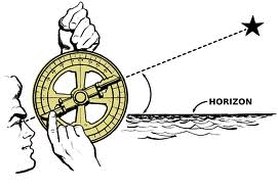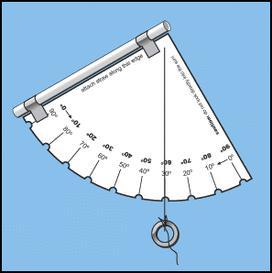Number the Stars  This week we looked at the contributions of two 4th Century BCE astronomers - Eudoxus and Hipparchus - and their influence on mapping the sky. We learned that Eudoxus, a student of Plato, created a celestial coordinate system for mapping the locations of the stars. About 150 years later, Hipparchus improved upon this sky map by adding a brightness classification for the stars. He also thought to apply the grid of imaginary celestial coordinate lines directly to the map of the Earth, thus initiating the use of our Latitude and Longitude coordinate system. He is known as the "Father of Trigonometry" and is credited with inventing the simple yet powerful astronomical instrument known as the astrolabe. Using his knowledge of spherical angles and the astrolabe, Hipparchus was able to determine locations on Earth's surface and to measure geographical latitude.  Simple Astrolabe Design Simple Astrolabe Design Students reviewed the vocabulary terms from Chapter 20 to make sure they have a working knowledge of these basic mapping and astronomy-related terms:
For a wonderful presentation on the use, history, and inspiration of the astrolabe, please view this TED talk. Homework
Comments are closed.
|
Categories
All
Archives
May 2016
|

 RSS Feed
RSS Feed